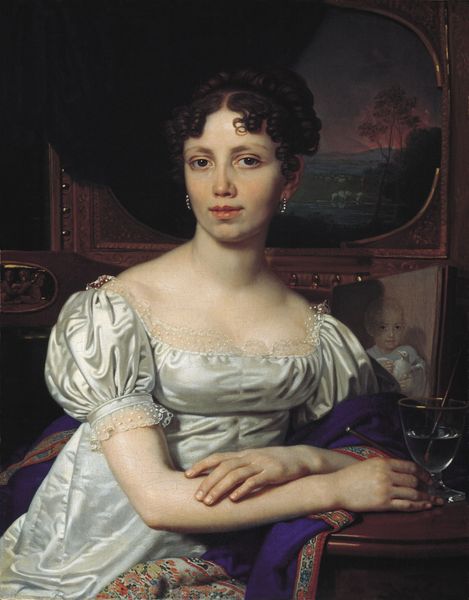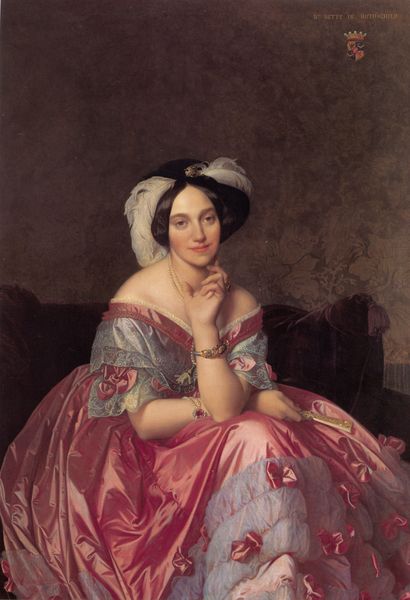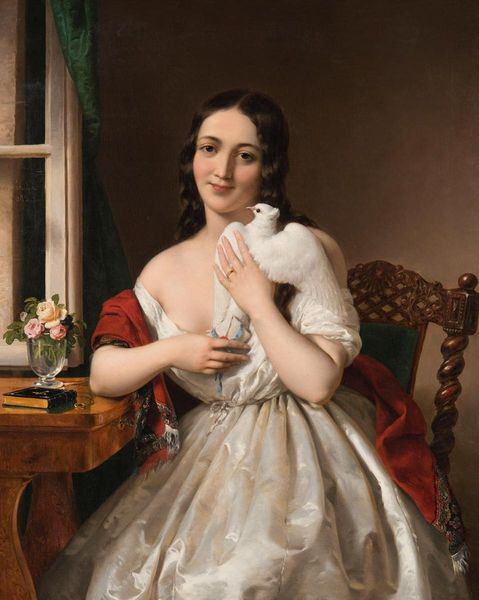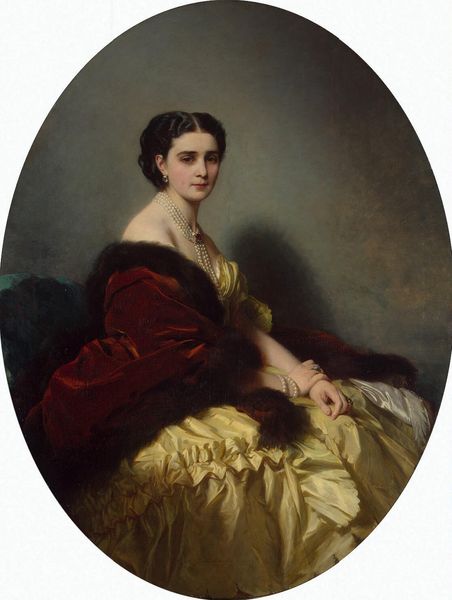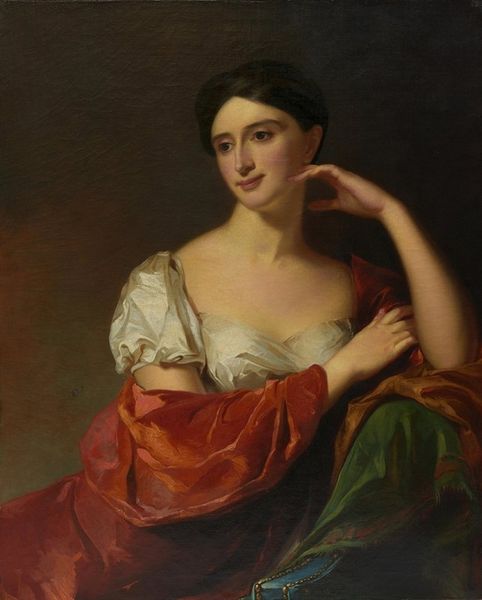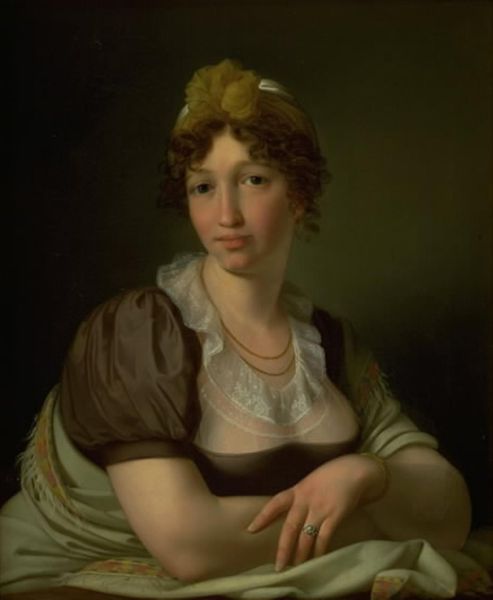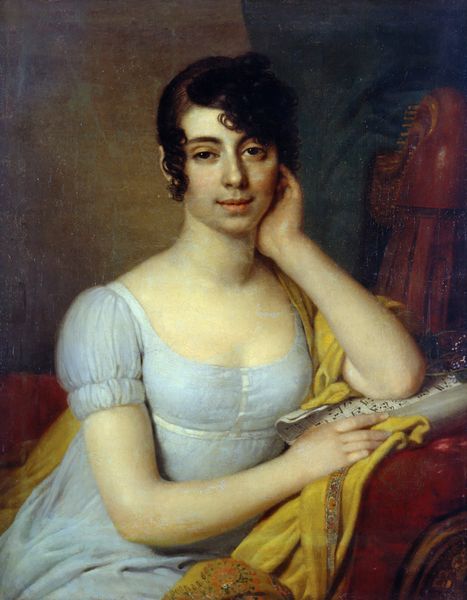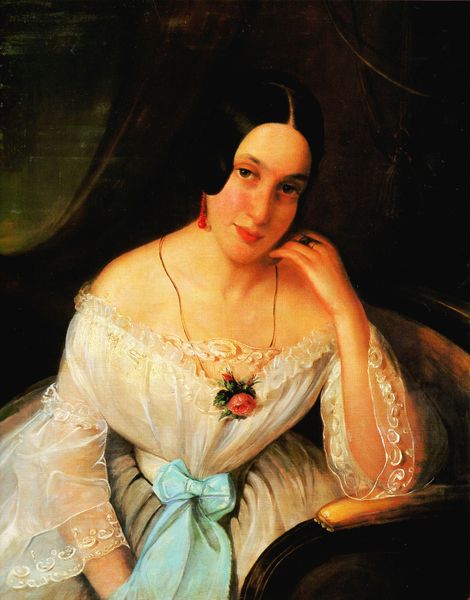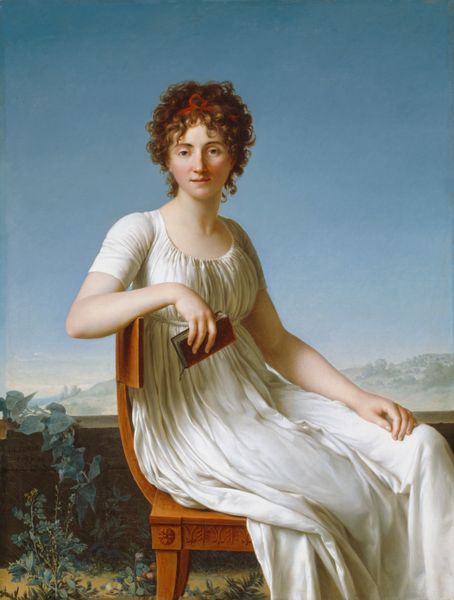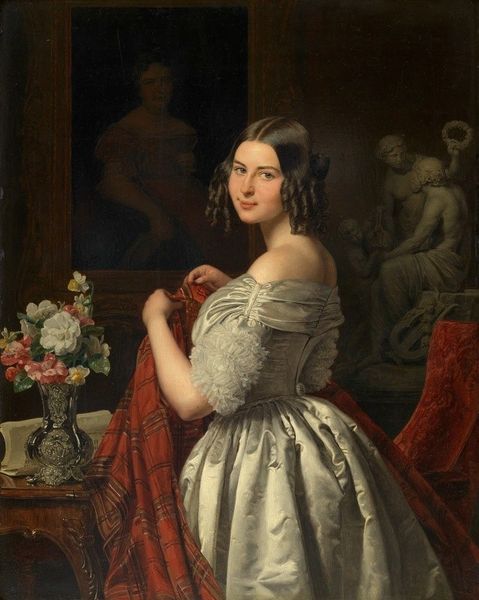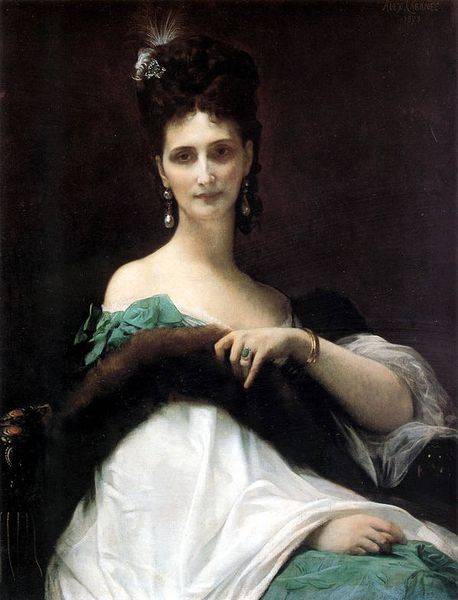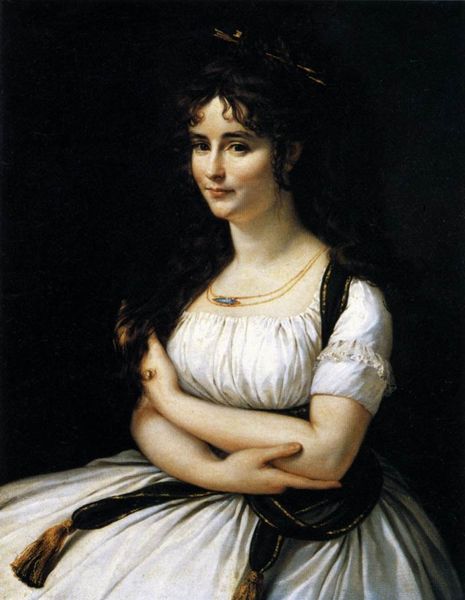
painting, oil-paint
#
portrait
#
figurative
#
neoclacissism
#
painting
#
oil-paint
#
academic-art
Copyright: Public Domain: Artvee
Curator: I’m immediately struck by the contemplative mood emanating from this portrait; there’s a stillness that's quite captivating. Editor: That's certainly evident. Here we have Jacques-Louis David's "Portrait of a Young Woman in White," painted around 1798. It's a striking example of Neoclassical portraiture from one of its leading practitioners. Curator: The simplicity of her attire emphasizes the inherent values, the clarity, and purity. And her gaze, directed slightly off to the side, invites speculation. Is she lost in thought, or perhaps observing something beyond the frame? Editor: It speaks to a moment in French history. After the radical phases of the Revolution, we see a return to order, reflected in this classical aesthetic and the relative austerity in her dress compared to pre-Revolutionary styles. The empire waist dress, influenced by ancient Greek tunics, signals a move away from aristocratic excess. Curator: Yes, the symbolism is powerful. White, as we know, often represents innocence and virtue. Here, in conjunction with her calm demeanor, it presents an ideal of womanhood fitting within the Neoclassical emphasis on moral purity. What's that tiny detail at her sleeve? It almost looks like a small ivory charm... Editor: You have a sharp eye! That minute, carefully rendered detail is what appears to be an ivory pendant depicting a classical muse, like Clio, or even perhaps, Terpsichore. Given the prevailing Neoclassical ideals of the time, these subtle cultural signals would have resonated deeply within educated circles. This choice subtly elevates the sitter, aligning her with classical virtues. Curator: It’s so interesting to consider the visual rhetoric. David uses these subtle symbols, the restrained color palette, the precise lines to portray a certain…respectability. Editor: Exactly! It reveals much about how societal values shape even the most seemingly straightforward portrait. The artwork encourages us to think about this not as a personal representation only, but as an emblem of cultural ideals in late 18th-century France. Curator: Thank you! Editor: My pleasure.
Comments
No comments
Be the first to comment and join the conversation on the ultimate creative platform.
